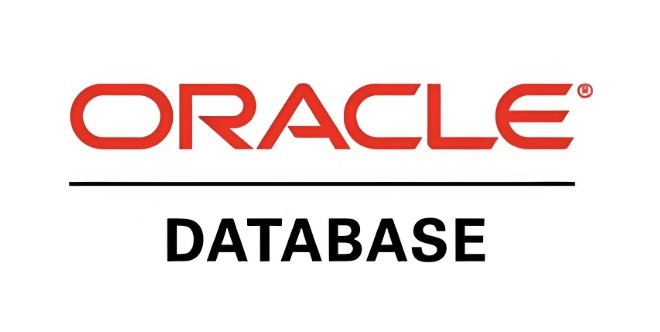How to find the Oracle SID?
Run SELECT INSTANCE_NAME FROM V$INSTANCE; if you can connect to the database, as it directly returns the Oracle SID. 2. Check the ORACLE_SID environment variable on the database server by running echo $ORACLE_SID as the Oracle user. 3. Examine the listener.ora file and locate the SID_NAME value under SID_DESC to identify the SID. 4. Use ps -ef | grep pmon on Unix/Linux systems and extract the SID from the ora_pmon_

Finding the Oracle SID (System Identifier) is essential for connecting to an Oracle database, especially when setting up clients, configuring tools, or troubleshooting. Here are several practical ways to find the Oracle SID, depending on your access level and environment.

1. Check Using SQL Query (If You Can Connect to the Database)
If you already have access to the database (e.g., via SQL*Plus or SQL Developer), run:
SELECT INSTANCE_NAME FROM V$INSTANCE;
or

SELECT NAME FROM V$DATABASE;
INSTANCE_NAMEfromV$INSTANCEgives you the Oracle SID.NAMEfromV$DATABASEgives the database name, which is often the same as the SID but not always.
✅ This is the most reliable method if you can log in.
2. Check Environment Variables (On the Database Server)
On the Oracle database server, the ORACLE_SID environment variable is typically set for the Oracle user (like oracle).

Run this in the terminal (Linux/Unix):
echo $ORACLE_SID
or
env | grep ORACLE_SID
? Tip: Make sure you're logged in as the Oracle software owner (usually the
oracleuser), because the variable may not be set for other users.
3. Look at the Listener Configuration
Check the listener.ora file, usually located in $ORACLE_HOME/network/admin.
Look for lines like:
SID_LIST_LISTENER =
(SID_LIST =
(SID_DESC =
(SID_NAME = orcl)
(ORACLE_HOME = /u01/app/oracle/product/19.0.0/dbhome_1)
)
)- The
SID_NAMEvalue is the Oracle SID.
? Common path:
/u01/app/oracle/product/12.1.0/dbhome_1/network/admin/listener.ora
4. Use the ps Command (On Unix/Linux Servers)
If Oracle processes are running, you can infer the SID from the background processes.
Run:
ps -ef | grep pmon
You’ll see output like:
oracle 12345 1 0 10:30 ? 00:00:00 ora_pmon_orcl
- The part after
ora_pmon_(in this case,orcl) is the Oracle SID.
⚠️ This only works if the instance is running.
5. Check tnsnames.ora (For Remote Connection Info)
If you're connecting from a client machine, check the tnsnames.ora file. It often includes the SID in connection descriptors.
Example:
ORCL =
(DESCRIPTION =
(ADDRESS = (PROTOCOL = TCP)(HOST = dbhost.example.com)(PORT = 1521))
(CONNECT_DATA =
(SERVER = DEDICATED)
(SERVICE_NAME = orcl.example.com)
(SID = orcl)
)
)- Look for the
SIDparameter underCONNECT_DATA.
? This file is usually in
$ORACLE_HOME/network/admin.
6. Use Oracle Net Manager or lsnrctl
Run the following command to see registered services and SIDs:
lsnrctl status
Look for sections like:
Service "orcl.example.com" has 1 instance(s). Instance "orcl", status READY, has 1 handler(s) for this service...
- The
Instancename listed is the Oracle SID.
Summary of Key Methods
| Method | When to Use |
|---|---|
SELECT INSTANCE_NAME FROM V$INSTANCE; |
You can connect to the DB |
echo $ORACLE_SID |
You're on the server as Oracle user |
ps -ef | grep pmon |
Instance is running, you have shell access |
listener.ora or tnsnames.ora
|
Checking config files |
lsnrctl status |
Want to see what’s registered with the listener |
Basically, the easiest way depends on your access. If you're on the server, check $ORACLE_SID or ps. If you can query the DB, just ask it directly. Otherwise, config files or lsnrctl will usually have the answer.
The above is the detailed content of How to find the Oracle SID?. For more information, please follow other related articles on the PHP Chinese website!

Hot AI Tools

Undress AI Tool
Undress images for free

Undresser.AI Undress
AI-powered app for creating realistic nude photos

AI Clothes Remover
Online AI tool for removing clothes from photos.

Clothoff.io
AI clothes remover

Video Face Swap
Swap faces in any video effortlessly with our completely free AI face swap tool!

Hot Article

Hot Tools

Notepad++7.3.1
Easy-to-use and free code editor

SublimeText3 Chinese version
Chinese version, very easy to use

Zend Studio 13.0.1
Powerful PHP integrated development environment

Dreamweaver CS6
Visual web development tools

SublimeText3 Mac version
God-level code editing software (SublimeText3)
 How to check Oracle database version?
Jul 26, 2025 am 07:19 AM
How to check Oracle database version?
Jul 26, 2025 am 07:19 AM
Run SELECT*FROMv$version; you can obtain the complete version information of the Oracle database, including the database, PL/SQL, core library, etc. version details, which is the most commonly used reliable method for DBA; 2. Use SELECTbannerFROMv$versionWHEREbannerLIKE'Oracle%'; you can only display the main version information of the Oracle database; 3. Query the PRODUCT_COMPONENT_VERSION view to get the version of each Oracle component; 4. Through the sqlplus-V command, you can view the client or server tool version without logging into the database, but it may not reflect the actual running
 What is the Oracle Optimizer, and how does it determine the execution plan for a SQL statement?
Jul 25, 2025 am 12:47 AM
What is the Oracle Optimizer, and how does it determine the execution plan for a SQL statement?
Jul 25, 2025 am 12:47 AM
TheOracleOptimizerdeterminesthemostefficientwaytoexecuteSQLbyanalyzingexecutionplansbasedonstatisticsandcostestimation.1.Itdecideshowtoaccessdata,includingindexusage,tablejoinorder,andjoinmethods.2.Itestimatescostusingtableandsystemstatistics,andpred
 How do Oracle sequences differ from identity columns (introduced in later versions)?
Jul 23, 2025 am 04:17 AM
How do Oracle sequences differ from identity columns (introduced in later versions)?
Jul 23, 2025 am 04:17 AM
Oraclesequences and identitycolumns can generate self-value-added, but the mechanism is different from the applicable scenarios. 1. Oracle sequences are independent objects that can be used across tables, providing higher control flexibility, such as cache, looping, etc.; 2. The Identity column embeds the self-increment logic in the table column, simplifying the settings, suitable for simple scenarios and closer to MySQL/PostgreSQL usage; 3. The key differences are the scope of action (sequences are available globally, identity columns are limited to single tables), control ability (sequence functions are stronger) and ease of use (identity columns are more intuitive); 4. It is recommended to use identity columns in simple scenarios, and when complex systems or shared counters are required, the sequence is preferred.
 How to create a user in Oracle and grant privileges?
Jul 28, 2025 am 03:43 AM
How to create a user in Oracle and grant privileges?
Jul 28, 2025 am 03:43 AM
Connect to users with DBA permissions; 2. Use the CREATEUSER command to create users and specify necessary parameters; 3. Grant system permissions such as CREATESSION, CREATETABLE, etc. or use CONNECT and RESOURCE roles; 4. Grant additional permissions such as CREATEPROCEDURE or UNLIMITEDTABLESPACE as needed; 5. Optionally grant object permissions to other user objects; 6. Verify user login, the entire process needs to ensure that it is executed in the correct container and follow the principle of minimum permissions, use a strong password policy, and finally complete Oracle user creation and permission allocation.
 How to use the CASE statement in an Oracle query?
Aug 02, 2025 pm 04:32 PM
How to use the CASE statement in an Oracle query?
Aug 02, 2025 pm 04:32 PM
OracleSQL's CASE statement is used to implement conditional logic in queries, supporting two forms: 1. Simple CASE is used to compare a single expression with multiple values, such as returning department names according to department_id; 2. Search CASE is used to evaluate multiple boolean conditions, suitable for scope or complex logic, such as classified by salary level; 3. CASE can be used in SELECT, ORDERBY, WHERE (indirect), GROUPBY and HAVING clauses to implement data conversion, sorting, filtering, and grouping; 4. Best practices include always using ELSE to prevent NULL, ensure ending in END, adding alias to the result columns, and avoiding excessive nesting; 5. Compared with the old DECOD
 What is the listener.ora file in Oracle?
Jul 26, 2025 am 05:30 AM
What is the listener.ora file in Oracle?
Jul 26, 2025 am 05:30 AM
Thelistener.orafileisessentialforconfiguringtheOracleNetListenertoacceptandrouteclientconnectionrequests;itdefineslisteningaddressesandports,specifiesdatabaseservicesviastaticregistration,andsetslistenerparameterslikeloggingandtracing;locatedin$ORACL
 How to concatenate multiple columns into one in Oracle?
Aug 03, 2025 am 10:40 AM
How to concatenate multiple columns into one in Oracle?
Aug 03, 2025 am 10:40 AM
Usethe||operatortoconcatenatemultiplecolumnsinOracle,asitismorepracticalandflexiblethanCONCAT();2.Addseparatorslikespacesorcommasdirectlywithintheexpressionusingquotes;3.HandleNULLvaluessafelysinceOracletreatsthemasemptystringsduringconcatenation;4.U
 How to kill a session in Oracle?
Jul 24, 2025 am 01:31 AM
How to kill a session in Oracle?
Jul 24, 2025 am 01:31 AM
To terminate an Oracle session, first query the SID and SERIAL# through the V$SESSION view to locate the target session, and then execute the ALTERSYSTEMKILLSESSION'sid, serial#' command to terminate; if the session does not respond, the IMMEDIATE keyword can be added, and it is only forced to terminate by SPID at the operating system level in extreme cases. It should be noted that the transaction will be rolled back after the session is terminated, so be sure to confirm that the session information is accurate before performing the operation.







